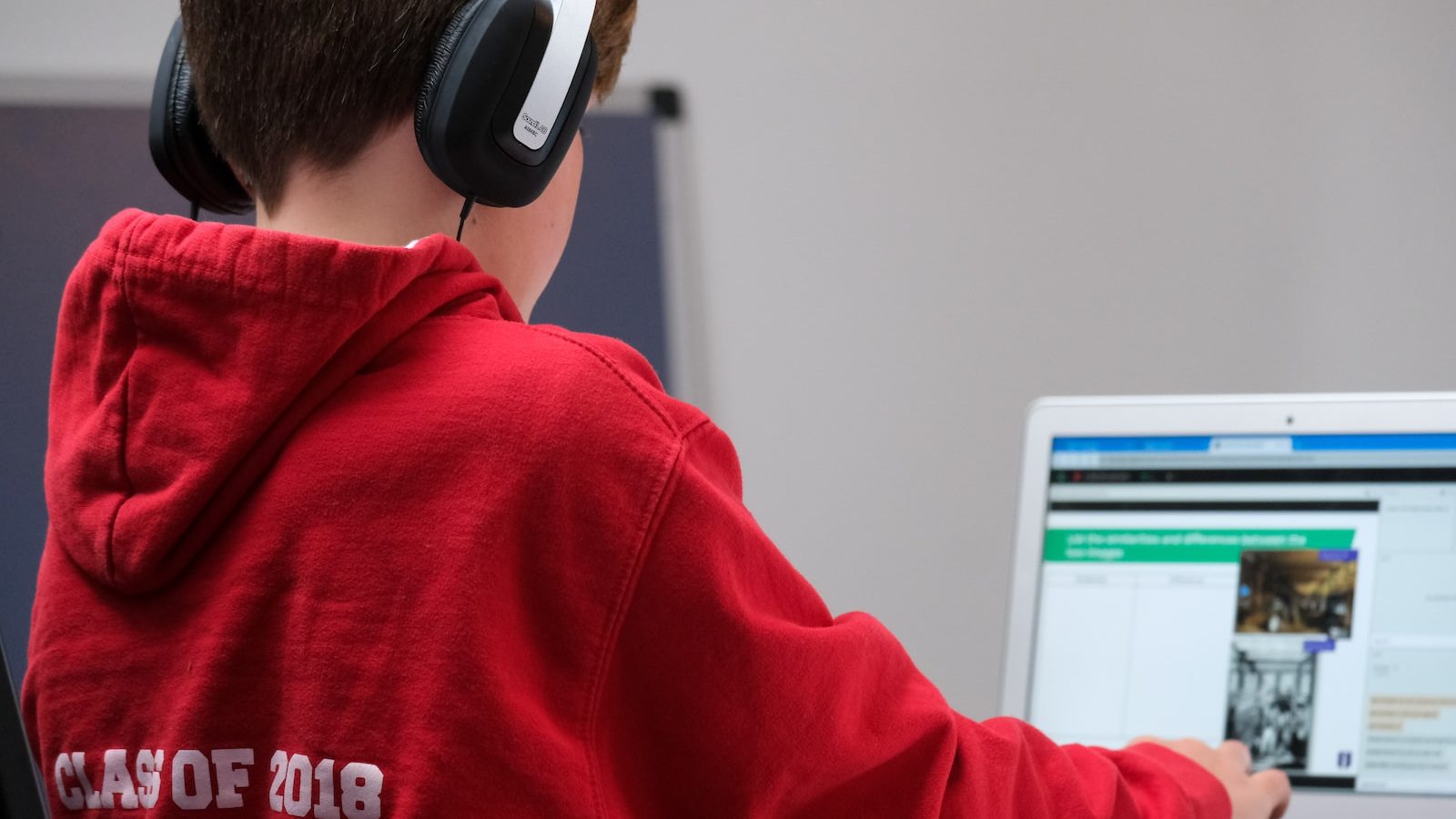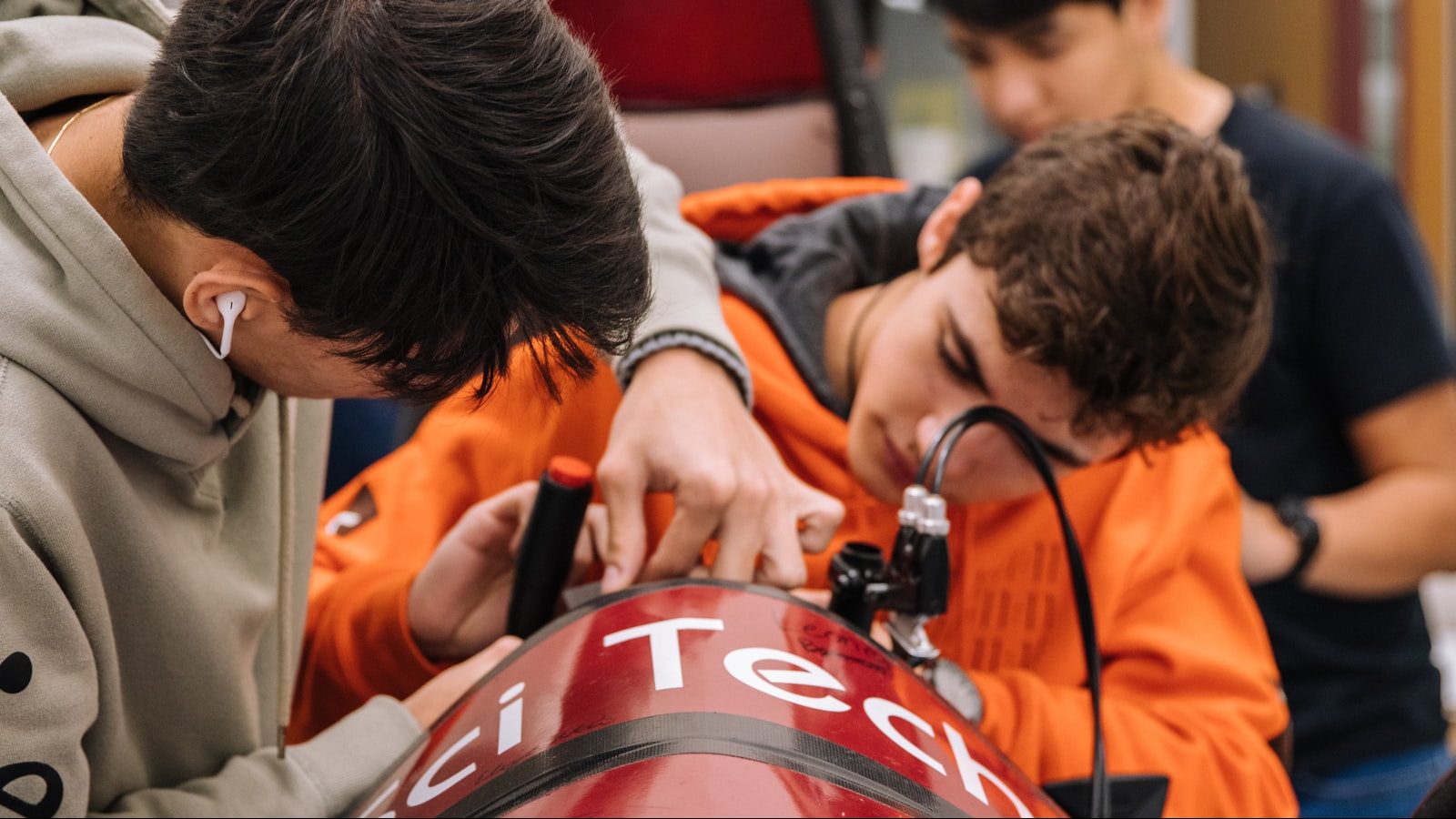Digital inequality in education may worsen economic divides
Technology is so pervasive that children are expected to have digital literacy skills when they enter the workforce. These expectations fail to recognize that not all students have equal access to the hardware, internet connection, or expensive software programs needed to develop these skills.
Challenge:
Adults with low tech-literacy struggle in careers that are shaped by computer programs
Opportunity:
A coaching approach can strengthen problem-solving skills that allow students to learn into adulthood
Impact:
Growth minded adults who know how to find and apply information can develop tech skills
Wisdom Weavers
Technology offers benefits, and those without are at a disadvantage
Classrooms use technology to support research, explore new cultures, and simulate real-life experiences. However, a report in late 2020 found that two-thirds of school-aged children worldwide do not have internet access in their homes. Digital inequality among students will directly impact global economies, exacerbating divides between affluent communities and the poor.
Unequal access to technology within a community impacts student performance. Students without internet access are at a distinct disadvantage because they lose out on the opportunity to practice computer skills, are closed off from outside research, and may fall behind in their lessons. Digital inequality among students has long-term effects on how youth will prepare for a tech-dependent workplace. Jobs that rely heavily on computers often look for digital skills, including word processors, video calling, and database management. In many companies, young people are being used as unofficial tech support.
“Major collective gains also come with worrisome increases in inequality and exclusion and ensuring the proper rollout of something that takes time and attention when we look to the future.”

The future of work is evolving in line with technological development; automation, artificial intelligence, and other innovations are replacing the roles of human beings. At the same time, technology is expanding and creating new careers in computer sciences and engineering. Students unfamiliar with computers may face job uncertainty or lose out on advancement opportunities throughout their careers.
The pandemic revealed and intensified digital inequality in education
The Covid-19 pandemic forced countries to examine the role of technology in a system marked by inequality. As learning shifted online, students who had varied computer access, internet availability, and digital literacy needed to switch to remote learning. Globally, K-12 students have lost an average of 8 months of learning, yet countries in Latin America and South Asia are reporting over a year of learning loss. Even within countries, learning loss, enrollment, and graduation rates are varied. A study by McKinsey found that U.S. students from low-income, minority, or rural backgrounds experienced more significant learning loss and increased drop-out rates. Without graduating high school or going on to college, the challenges for these students will directly translate into fewer job opportunities and lost income potential.
“The Covid pandemic has really exacerbated these challenges and the inequalities that we face around the globe.”

While universities were more equipped to handle the switch to digital learning, universities with existing digital infrastructure also experienced technological divides. A study in India found that instructors and students struggled with navigating new online programs during the pandemic. Students also reported difficulty accessing learning materials because they had poor internet connectivity. Wisdom Weaver Ananya Mehta reflects on these challenges in the Indian university setting, sharing that technology in school is “not divided properly…the progress, even if it’s happening, it’s uneven. It’s not everywhere; the education ecosystem altogether is not updated.” She proposes that the system must “ensure that [resources are] equally divided everywhere to address the digital inequality. I could see a lot of peers that are in different universities there; they do not have that technological support.”
For schools introducing new technology, coaches can:
- Help teachers process the challenges of adapting to new ways of teaching
- Build student self-esteem by framing change as a learning opportunity
- Encourage curiosity as students learn to apply new programs
Opportunities to address digital inequality in education
For technology to be effectively used in education, students need access to the internet, computers, and instruction to help them learn how to appropriately use technology in support of learning. The internet is a powerful tool, but students can also be exposed to misinformation and bias. While reflecting on the ethical challenges of technology use in classrooms, Wisdom Weaver Dr. Noah Sobe emphasizes that technology is best used as a tool to support classrooms but not replace them.
“There are amazing ways that the digital opens up possibilities for teachers and students to access texts, to access artwork, to connect other kinds of human experiences across the world. We need to make that the focus of our efforts.”

To address the impacts of Covid-19 on student learning, countries will also need to overcome long-standing and systemic inequalities in educational opportunity and resourcing. Noah suggests a global effort to prioritize research and support in disadvantaged communities. He explains, “one of the problems with a lot of innovation in education…It’s typically designed and tested on a unique profile, often those who are already enjoying privilege and advantage, and then it’s rolled out and adapted to others. The call here is to reverse that process and begin with the most vulnerable and the most modern marginalized situations with the learners who are most in need of greater opportunities and then to scale out to more privileged communities.”
Coaching Empowers People
Coaches are a helpful resource for any organization or individual that is experiencing change. During the pandemic, coaches supported teachers and schools as they navigated the stress and uncertainty of switching to remote learning for the first time. Wisdom Weaver Dr. Karen McClymont coached teachers and students who participated in remote learning in Malaysia. During this time, she saw firsthand how as teachers became more confident, they were able to improvise their systems to provide better learning experiences.
When adapting education to students with different abilities or access to technology, coaches can help teachers apply low-tech learning tools such as storytelling. Soft skills like critical thinking, identifying connection, and asking engaging questions can all be strengthened by using a coaching approach in the classroom. Students who possess these skills will also have the foundational resources to explore technology in their careers as technology access changes.
Manifesto for the Future of Education
34 Wisdom Weavers from 15 different countries gathered to reimagine the future of education, using the lenses of coaching, pedagogy, sustainability, technology, social transformation, and collaboration. These discussions inspired us to craft a call to action — a Manifesto for the Future of Education — that establishes a vision for transforming education around the world while integrating the practice of coaching as a catalyst for positive change.






